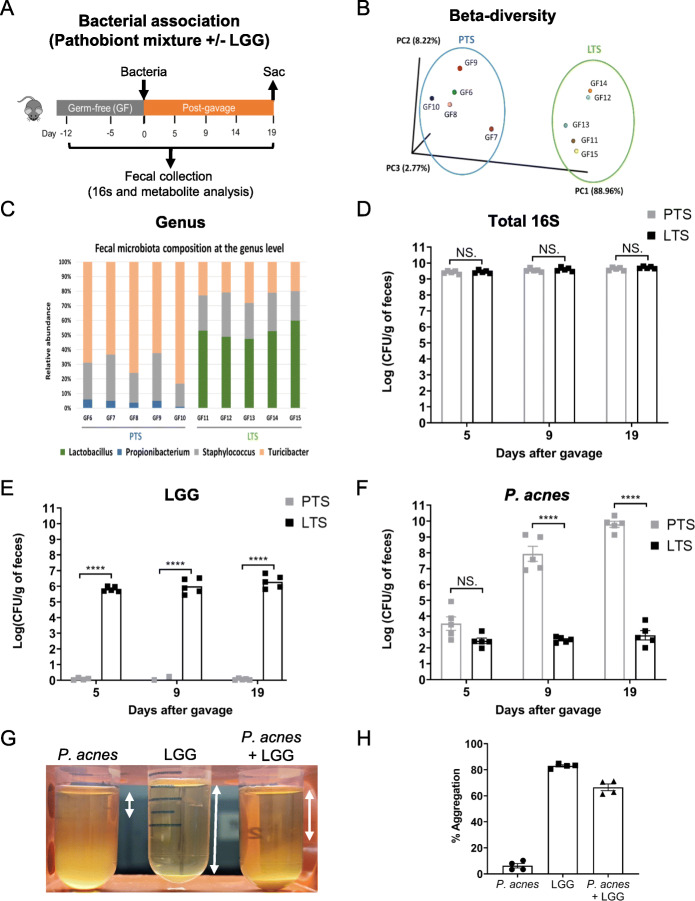Fig. 2.
LGG modifies bacterial and fecal metabolite composition of PTS. a Schematic diagram of the experimental design. Mice remained GF for 12 days, and on day 0, bacteria (PTS or LTS) were gavaged then feces were sampled on days 0 (before gavage), 5, 9, 14 and 19. Metabolites from feces were extracted using the pre-LC-MS procedure outlined above, then subjected to 16S metagenomic sequencing and metabolomics. b Principal coordinate analysis (PCoA) indicating beta diversity of bacterial communities in PTS and LTS mice after gavage. Each point refers to fecal samples in specific mice, with GF6 to 10 mice in the PTS cage, and GF11 to 15 in the LTS cage. c Microbiota composition (relative OTU abundance) at the genus level of feces collected 14th day postgavage from PTS and LTS mice. d Abundance of 16S rRNA (d), LGG (e), and P. acnes (f) in the feces of PTS and LTS mice (n = 5 in each group) 5, 9, and 19 days after gavage. g Images of aggregation of P. acnes alone, LGG alone, and P. acnes and LGG in medium after 48 h of incubation. Percentage of autoaggregation of P. acnes and LGG and coaggregation of P. acnes with LGG (h) after 48 h of incubation

